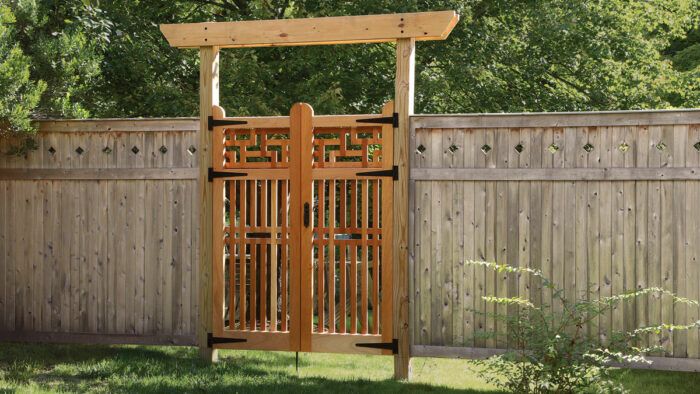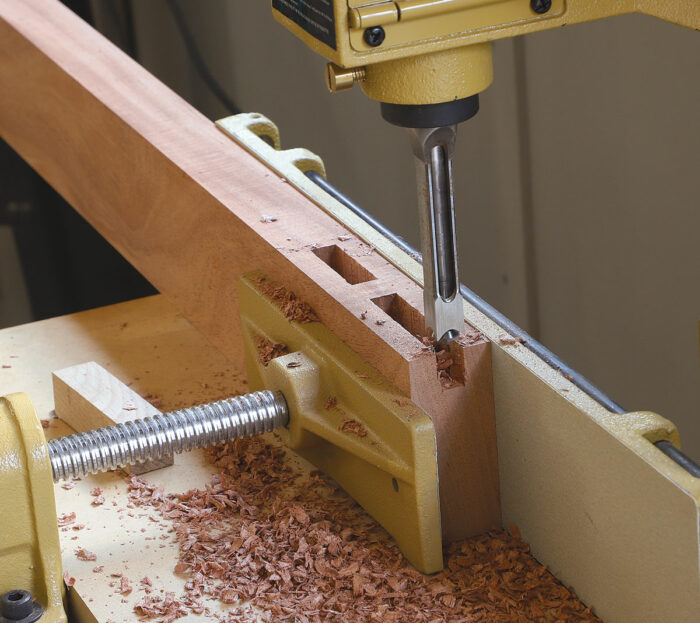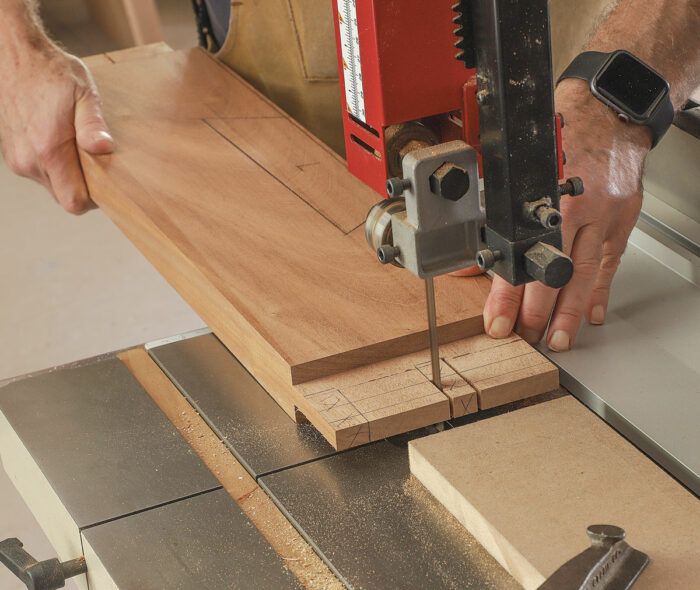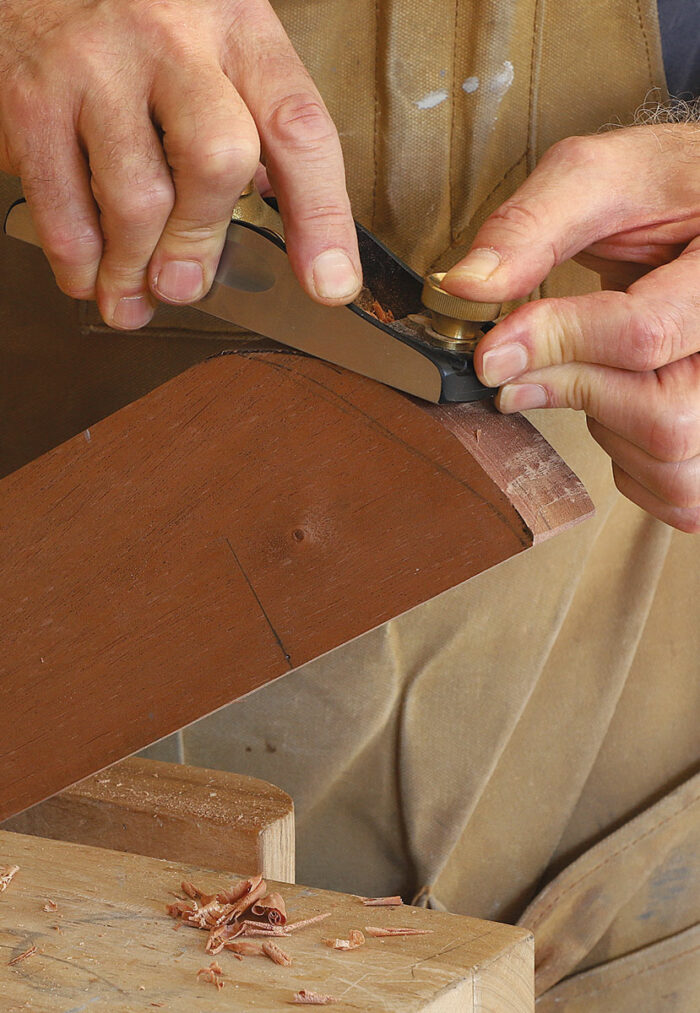
[ad_1]
Synopsis: John Hartman constructed two gates for his new yard, one which presents privateness and the opposite permitting a glimpse of the backyard inside. He began with the identical sturdy mortise-and-tenon door body, including latticework panels impressed by Japanese structure for one gate and tongue-and-groove panels with adorn cutouts for the opposite.
After my companion, Christine, and I moved to our new residence, we discovered we seldom used the yard. There was no privateness from the neighbors and nothing to draw the attention, and we felt uncomfortable each time we ventured out to make use of our grill on the unhappy patch of dilapidated pavers posing as a patio. One thing wanted to be completed.
We began with a good-sized vegetable backyard. Quickly adopted a stone terrace for entertaining and fencing for privateness. The fence had two openings: one main in from the entrance yard, the opposite main from the driveway by way of a pergola to the terrace; I turned my consideration to constructing gates for them.
I used the identical heavy-duty mortise-and-tenon body for each gates, however I gave them two very totally different panel remedies. For the gate by the driveway, the place privateness was paramount, I used leftover tongue-and-groove cedar fencing to make the panels; I painted them to unify the mismatched boards and made small ornamental cutouts within the higher panels. The gate to the entrance yard can be seen from the road, and I needed one thing there that supplied a little bit of privateness, an fascinating sample, and a glimpse of the backyard. The latticework panels I made for it had been impressed by a railing Christine present in a ebook of Japanese structure.
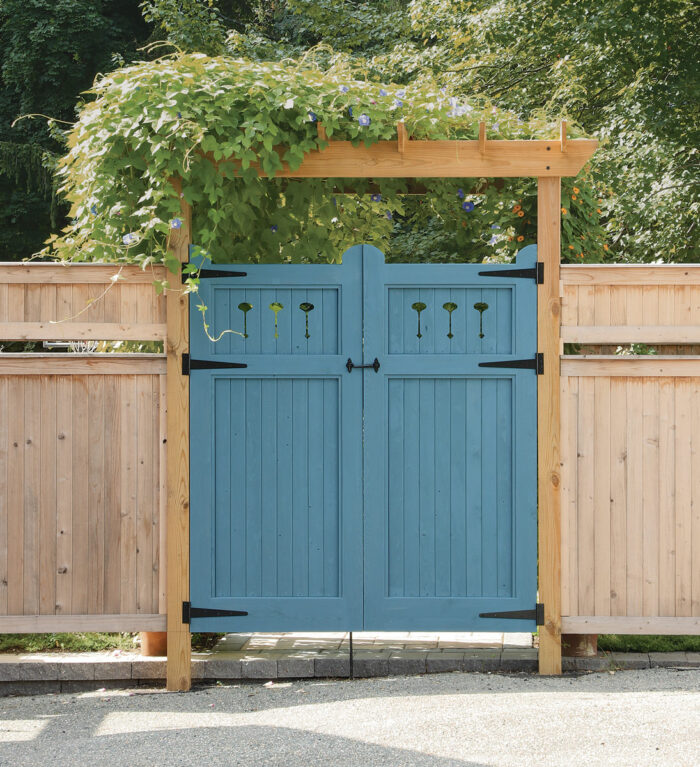
The frames come first
Double gates made sense, since one of many fence openings was 5 ft. large and the opposite was 6 ft.; I assumed single gates that dimension would have been overly heavy. Like frame-and-panel doorways, these gates are, structurally, a two-part system: a powerful body that resists racking and a lighter internal construction to cut back weight whereas offering privateness, isolating wooden motion, and opening alternatives for adornment.
I chosen the wooden with care, utilizing rot-resistant African mahogany for the frames. When you’d fairly not use unique wooden, there is a wonderful article by Hank Gilpin, “5 Woods for Out of doors Furnishings” (FWW #233) that gives recommendation on choosing home wooden for outside tasks.
For further power I constructed the gate frames with three rails and hung them on three hinges. I situated the rails in step with the lateral members of the fencing. On every gate the large backside rail acquired two tenons to keep away from the wooden motion downside with a single large tenon. I used the desk noticed with a dado head to chop the tenon cheeks and the bandsaw to take away the waste between the tenons and to outline the haunch on the backside.
To assist the gates shed rainwater, I beveled the highest edge of every rail at 10° and rounded the highest finish of the stiles. After scroll-sawing the curved tops of the stiles, I fitted the joinery and glued up the body, utilizing drawbore pins to cinch the joints.
Latticework panels
The lattice panels are created from strips of mahogany half-lapped and glued collectively, then screwed to the again of the gate body. Any easy rectangular lattice would suffice right here, and we selected a reasonably plain design for the decrease panels, however we went a bit additional with the Japanese-inspired sample within the higher panels. The higher and decrease lattices share the identical grid sample, so they continue to be in concord with one another.
Obtain John’s full-size
patterns for the lattice work
To chop the half-laps exactly, I constructed a jig for my desk noticed. It really works very like a box-joint jig, with an indexing pin protruding from the fence of a dado sled. However my jig provides an additional aspect, a bit of MDF that I name the “crenellation board,” which is notched alongside the underside edge. It’s this board, as an alternative of the workpiece, that registers on the indexing pin and controls the placement and width of the half laps. On a box-joint jig, the indexing pin suits exactly between adjoining fingers within the joint; however right here, the notches within the crenellation board are virtually 3 times wider than the dado stack, and I minimize the total width of the half-lap in a number of passes.
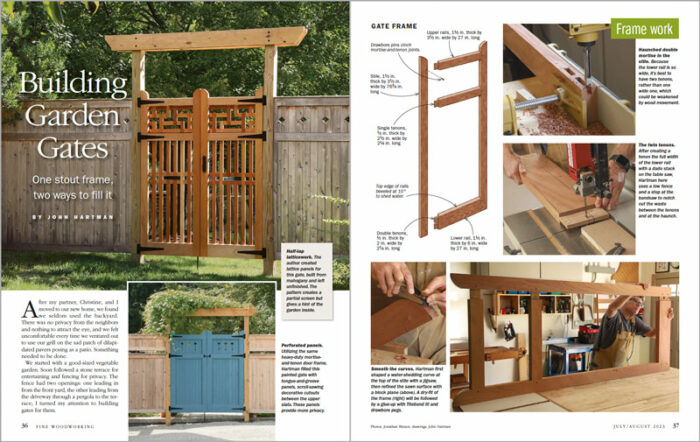
John Hartman works wooden in West Springfield, Mass. His expertise as an illustrator could be seen frequently within the pages of FWW.
Images: Jonathan Binzen; Drawings: John Hartman
From High quality Woodworking #304
To view the complete article, please click on the View PDF button under.
Join eletters at present and get the newest methods and how-to from High quality Woodworking, plus particular presents.
Obtain FREE PDF
if you enter your e-mail handle under.
[ad_2]
